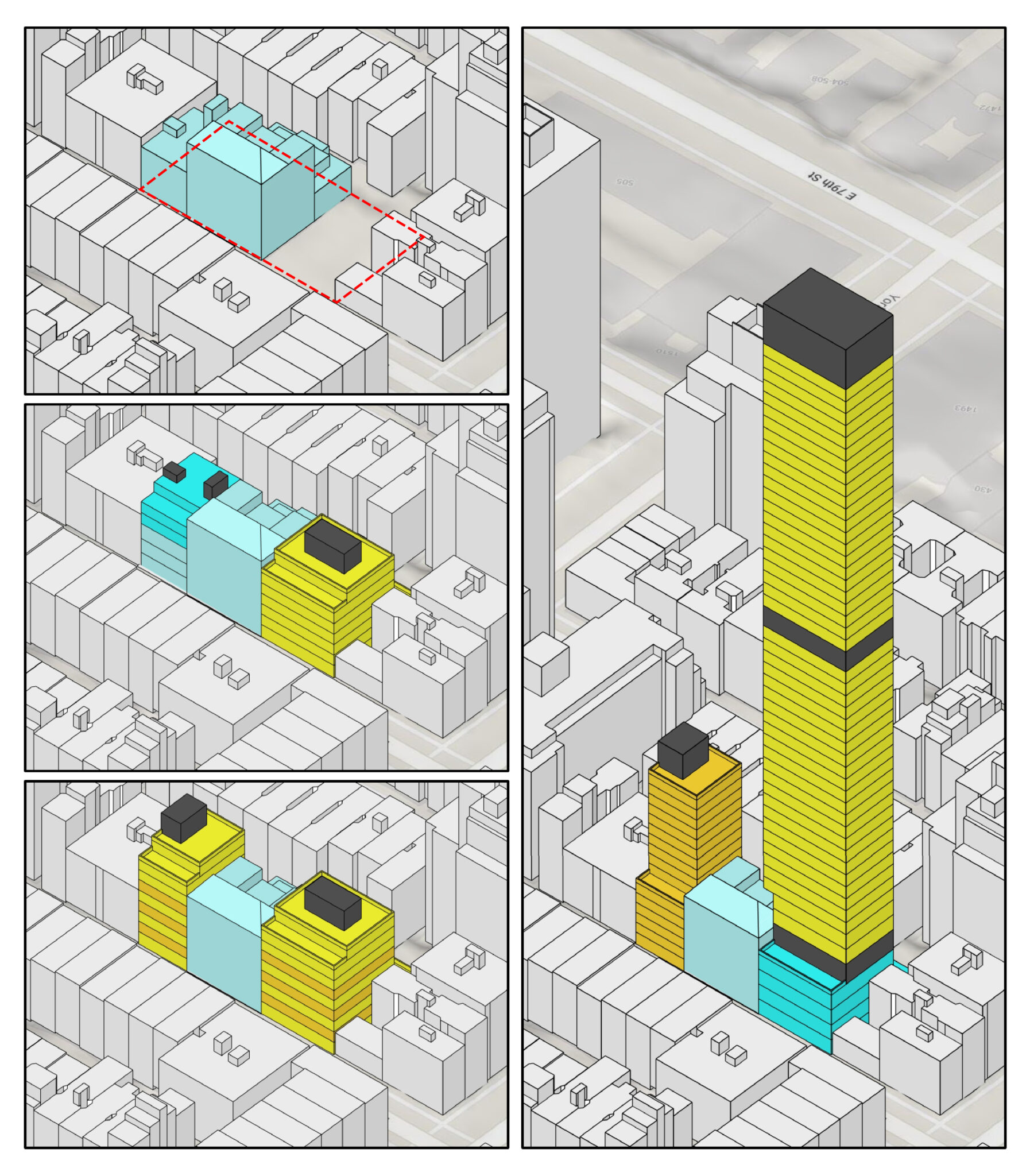
The left hand side of the graphic shows what could currently be built "as of right" either with no affordable housing (center) or with affordable housing (bottom). The tall tower on the right shows what type of building height would be allowed if the bill was passed, along with the affordable building that would be required. Graphic by George M. Janes.
Now that the state budget has been passed, the misleadingly named “Faith-Based Affordable Housing Act” has once again moved to the forefront in Albany — and it poses a serious threat to historic preservation and the character of neighborhoods across New York.
At first glance, the bill’s title sounds well-intentioned — who wouldn’t want to support affordable housing and enable faith-based institutions from developing their property? But a closer examination reveals a deeply flawed piece of legislation that would override long-standing local zoning and landmark protections, while doing little to deliver truly affordable housing. If enacted, the bill would allow the construction of large, out-of-scale buildings on sites owned by religious institutions, with little regard for the surrounding neighborhood context. It would grant the State unprecedented authority to bypass local decision-making, weakening the power of community-based planning and preservation bodies.
Specifically, the legislation would allow developers to override landmark protections for any religious sites that are landmarked in the future--that is, after the date the bill is passed. In addition, local zoning regulations that currently protect the scale and integrity of neighborhoods would be overridden, allowing development on religious sites up to the height of the tallest existing building on the property — or even taller if the site is located within 800 feet of a higher-density zoning district, as is the case for the low-rise residential corridors between the avenues on the Upper East Side. This would pave the way for towers and bulky developments in the midblock, permanently altering the character and livability of our neighborhoods.
The bill’s claim to promote affordable housing is perhaps its most misleading aspect. While it presents itself as a response to the housing crisis, the legislation only requires that 13% of new units be designated as affordable — and even those units could be priced at levels far beyond what the average New Yorker can afford. In essence, the bill would allow aggressive development with minimal affordability requirements and no meaningful community oversight, all while chipping away at the very protections that have helped keep New York’s neighborhoods vibrant and livable.
FRIENDS, along with a coalition of preservation organizations, has urged the bill’s sponsors to revise the legislation. We have called for changes that would protect local control and ensure that any new development provides real public benefit — including genuine affordability and sensitivity to neighborhood scale and character. You can read our joint letter to the bill’s sponsors here, and we strongly encourage you to make your voice heard.
If passed, this bill would be a major step toward dismantling landmark and zoning protections statewide. It would establish a dangerous precedent that allows unchecked development under the guise of a noble cause. Once those protections are stripped away, it will be difficult — if not impossible — to restore them. We must stand up for thoughtful development, true affordability, and the preservation of the neighborhoods that make New York special.
Take Action Today! Write to your state representatives at the button below to urge them to not let the bill move forward in its current form.

